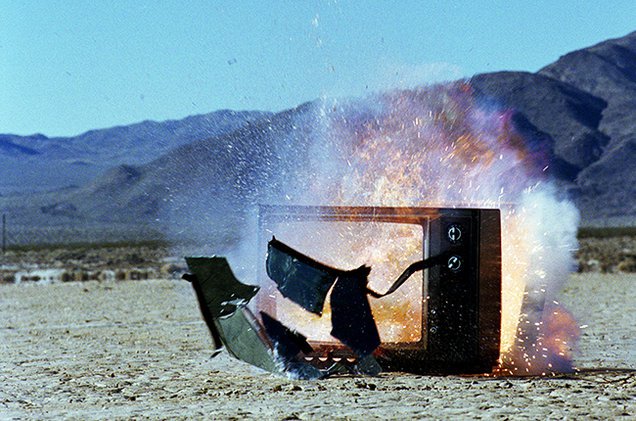 SXSW: Live Streaming Might Be Next Big Thing,
SXSW: Live Streaming Might Be Next Big Thing,SXSW is a great place to find out where the music industry is headed. Some products aren’t ready for prime time. Some are already there.
Live-streaming concerts is technically possible, and viewership is high enough to attract sponsors. A festival with five or six stages can carry a production cost between $500,00 and $800,000, said Hank Neuberger of Springboard Productions. People, often young consumers desired by brands, are willing to watch. And sponsors are already willing to pay for their attention. “With the right brand, it’s one long commercial,” said Karly Tuckner of C3 Presents.
Low-cost live streaming is a viable option. Raymond Roker of Goldenvoice pointed to The Boiler Room, a network of regularly broadcast streams from around the world with a heavy dance music slant. Live DJ sets are stripped down to little more than a GoPro video camera and an audio feed. “I’m bummed I didn’t think of it,” Roker said.
Live streaming is not without its problems, according to insiders. Rights are a major sticking point that can take many months to untangle. A live recording of a SXSW performance at a major company’s installation might be ready to stream half a year later — far too late to capitalize on the once-fresh content.
Not all artists and labels want to be involved in live streams. Festivals these days are more frequently including live-streaming clauses in artist contracts. But artists and labels are often hesitant to make high-quality live recordings available. The artist doesn’t give pause that a performance might be captured by dozens, if not hundreds, of smartphones. But a professional-grade live video is like a live album: it might be a good idea, but you can’t make too many of them. What’s more, a bad performance will live online and can be seen by millions.
But live streaming is already a thing. Maybe not a huge thing, but the technology and willingness to fund already exist. And based on the number of SXSW panels dedicated to live streaming, people are starting to ponder its potential.
The same can’t be said of high-definition audio — it isn’t yet “a thing.” But can it become a thing? Two years after Neil Young unveiled his hi-def iPod, the Pono, on the keynote stage of Austin’s Convention Center, executives — Allen Weiner of Parks Associates, Julien Simon from Deezer, Sonos product manager Kristen Bender, Warner Music digital strategist Oana Cornis-Pop and Vince Bannon of Getty Images — discussed the topic during a the “High Definition Audio: FLAC or Fluke?” panel.
Companies are already making moves for an expected HD audio revolution. A few streaming services, namely Deezer and Tidal, are already pushing high-quality audio streaming for twice the price of a normal subscription service plan. They use the open-source FLAC format. Whereas MP3s are compressed into a smaller, “lossy” file, FLAC is a lossless format with far superior sound quality. Apple is rumored to be developing its own HD audio format that can combine with a new audio port for iPhones that can deliver higher-quality audio.
Data was presented during the panel to show the public’s latent demand for HD audio. A Parks Associates survey found audio quality was a factor in purchase intention for 67 percent of people. The market research firm forecasts for subscription services of any sound quality is upbeat but not unrealistic: over 70 million in North America and 99 million in Western Europe by 2020.
Unsurprisingly, given the companies being represented, the panelists were unanimously bullish about HD audio. Their sound bites were resounding: “The good news is there’s a huge audience;” “The data shows people are interested in hi-fi and high-def;” “Now people get it;” “It’s inevitable;” and “It will definitely grow.”
But HD streaming is still in the experimental phase. The panelists agreed that current marketing efforts are subject to change. Julien Simon of Deezer admitted that the current price for Deezer Elite, the company’s HD audio plan, will be fluid. “We have $19.99 for 16-bit
. The right price might be $15 or lower. It’s too early to know.”
The mood was less upbeat about when the inevitable day of success will arrive. At the very least, there was an acknowledgement that HD streaming has a long road to reach mainstream adoption. HD radio is far ahead of HD streaming, by the way. About half of all new cars sold in the U.S. last year shipped with HD radio capabilities. But HD streaming is further behind, and given the automobile’s long replacement cycle, HD streaming isn’t likely to exceed niche status in the next five years.
Maybe the trick is just getting consumers to experience HD streaming. Vince Bannon of Getty Images drew the parallel of live music and the arrival of annual festivals like Coachella in 2001 (older events like Bumbershoot, Telluride Bluegrass Festival and Jazz Fest apparently don’t count). For many music fans, live music became synonymous with gorging on music for a fixed price at huge, multi-stage events. “Really it’s about experience. The live business has hockey-sticked and gone through the roof over the last 16 years.”
Will HD audio have its own hockey stick moment? Don’t hold your breath. Festivals have certainly been a trend in the concert business that provides fans with the all-you-can-eat-discovery-for-a-fixed price offering of digital subscription services. But it’s well known that the concert business appears to be thriving mostly because superstars’ ticket prices have skyrocketed. Statistics show that from 1981 to 2012 ticket prices increased nearly 400 percent while the earnings growth of the top 1 percent of artists doubled. The middle class, the very same artists billed underneath the superstars at multi-day festivals, is stuck in 1981.
Live streaming seems to be going through the early phase of exponential growth, the part of the demand curve where the line shoots upward as demand soars — picture a hockey stick. HD streaming is still in the flat part of the curve. A few more years and many more SXSW panels will pass before HD streaming looks like a hockey stock and not a toothpick on a table.

























